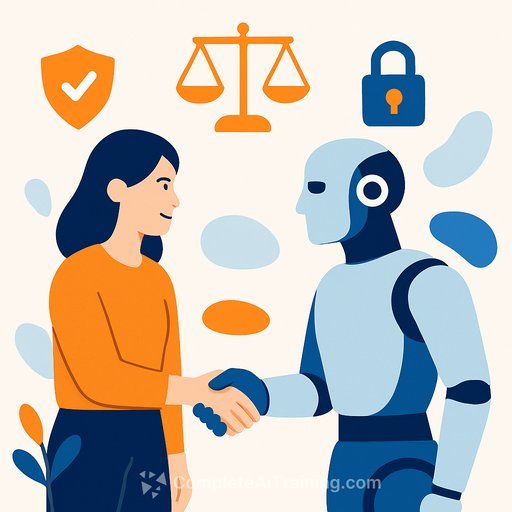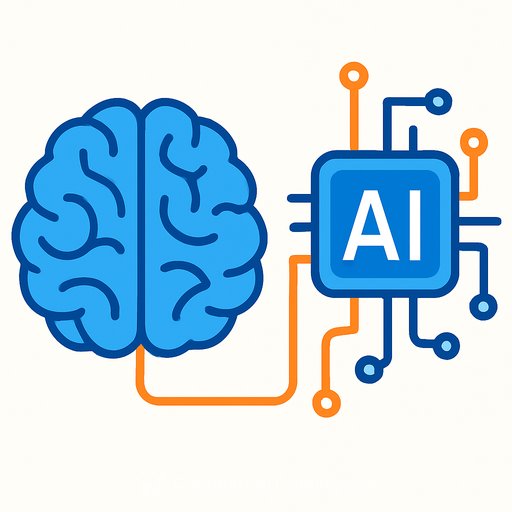AI meets morality: Rethinking "smart cities" with the ADC model
Tomorrow's cities will run on data. Sensors in lights, cameras, and bins already optimize traffic, air quality, and services. The harder problem isn't technical - it's moral. How do we get AI to make fair, safe, and transparent decisions in public life?
Philosophers Daniel Shussett and Veljko Dubljević propose a practical answer: encode moral reasoning directly into city AI. Their study applies the Agent-Deed-Consequence (ADC) model to smart-city decisions so machines can act in line with human values - and explain why.
Why "smart" isn't enough
A city can be packed with automation and still make bad calls if it ignores ethics. Four fault lines keep showing up in deployments:
- Privacy and surveillance
- Democracy and decision-making
- Social inequality
- Environmental sustainability
These aren't problems you fix with more data. They require judgment.
The Agent-Deed-Consequence model, in plain terms
- Agent: Who is acting and with what intention?
- Deed: What action is taken, and does it follow legitimate rules?
- Consequence: Who is helped or harmed by the outcome?
Each part gets a moral weight. Combine them, and you get a defensible decision the system can execute - and audit later. That structure makes ethics computational without stripping out human values.
From ethics to code: deontic logic
The team uses deontic logic (obligations, permissions, prohibitions) to map human norms into machine-readable rules. Example: an ambulance with verified emergency status approaches an intersection - the system ought to change the light. A vehicle spoofing lights without authorization ought not. The "ought" and "ought not" are explicit, testable rules, not implicit guesses.
Background on deontic logic: Stanford Encyclopedia of Philosophy. Journal venue: MDPI Algorithms.
Where this matters in city systems
- Traffic management: Prioritize emergency vehicles without enabling spoofing, weigh delays across neighborhoods fairly.
- Public safety: Escalate intrusive surveillance only under clear, immediate threats; throttle back for minor infractions.
- Resource allocation: Balance efficiency with equity when distributing repairs, cleaning, or energy load-shedding.
- Alarms and alerts: Reduce false positives (e.g., gunshot detection) and route ambiguous cases to human reviewers.
Implementation playbook for city AI teams
- Define values and weights: With stakeholders, set relative importance for agent intent, deed legality, and consequences. Document trade-offs.
- Encode rules with deontic operators: Ought/permit/forbid for common scenarios (e.g., emergency lanes, school zones, data retention windows).
- Verification sources: Specify how intent is validated (credentials, cryptographic tokens, chain-of-custody for alerts) to prevent gaming.
- Human-in-the-loop triggers: Route borderline scores, conflicting rules, or high-risk actions to trained operators within fixed SLAs.
- Logging and explanations: Store the agent-deed-consequence scores, rules fired, and rationale for each decision for audit and appeals.
- Simulation and red-teaming: Stress-test policies against adversarial behavior, edge cases, and demographic variability before deployment.
- Calibration by context: Use stricter thresholds for high-stakes interventions than for low-impact automation.
- Governance hooks: Publish policy summaries; allow independent oversight to review rule sets and outcomes.
- Procurement checklist: Require vendors to expose ethics rules, weights, and explainability interfaces compatible with ADC.
Metrics that keep systems honest
- Fairness: Disparate impact across neighborhoods, demographics, and times of day.
- Safety: Rates of avoided harm versus induced risk; incident severity distribution.
- Privacy: Intrusion minutes per capita; data retention exceptions; access audits.
- Accuracy: False positive/negative rates for alerts and enforcement actions.
- Escalation quality: Time to human review; reversal rate of automated decisions.
- Transparency: Share of decisions with machine-generated explanations that pass human QA.
Humans and machines as a "group agent"
The study frames the city as a joint decision-maker: people provide context and empathy; AI provides consistency and speed. Accountability expands, it doesn't vanish. Routine calls stay automated; morally gray cases go to humans - a practical safety net.
Limits and open questions
- Choosing weights for agent, deed, and consequence is inherently political; make the process visible.
- Conflicts between values (e.g., privacy vs. safety) need escalation paths and sunset reviews.
- Adversarial behavior will evolve; verification and monitoring must keep pace.
- Legal compliance varies by jurisdiction; ethics rules should bind tighter than minimum law, not looser.
What to do next
- Run controlled simulations across traffic, safety, and utilities; publish the decision logs and explanations.
- Pilot in low-risk domains first (e.g., maintenance routing) before applying to enforcement.
- Co-design with communities and first responders; rehearse incident playbooks with real thresholds.
- Set up independent audits and appeals for automated actions from day one.
If your team is upskilling for AI governance and operations, see practical learning paths by role: courses by job.
Bottom line
Smart cities need more than data and code; they need judgment. The ADC model gives engineers, policy teams, and vendors a shared language for that judgment - one that systems can execute, auditors can inspect, and citizens can understand.
Your membership also unlocks:






